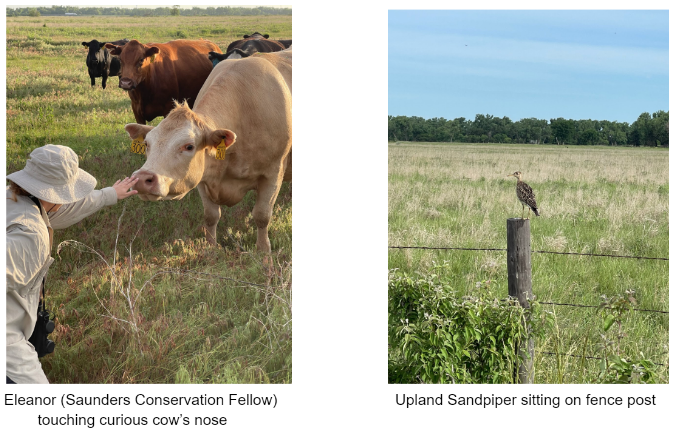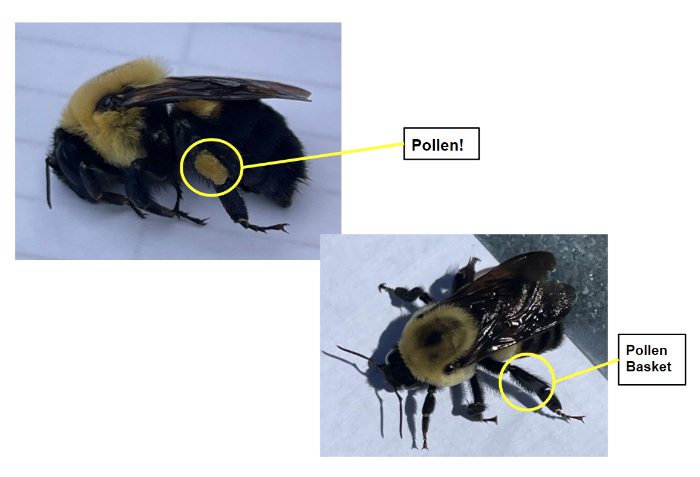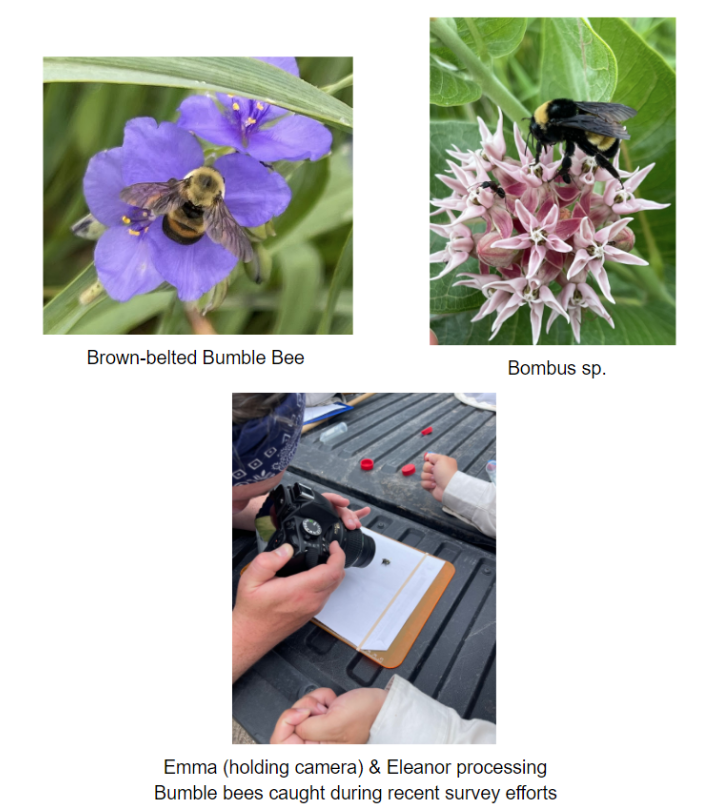Hey everyone! It’s Emma! I’m back to give you all some updates on what has been going on at the Crane Trust with the Science team.
Birds first!!!
Since I started in late May we have been conducting breeding bird surveys. This entails either Eleanor (Saunders Conservation Fellow), Mia (Science Intern), or myself heading out with Bethany Ostrom (Crane Trust Wildlife Biologist) at 6 AM to do around 4 to 5 surveys. We spend 15 minutes at each site and wrap up the surveys 3 hours after sunrise, which means we finish up around 9:00 AM. These surveys are being completed as a part of the Long Term Biological Research Program. The surveys help us to get a better understanding of the variety and the distribution of bird species found in varying ecosystems and management prescriptions throughout the year and over several years. Having data that dates back numerous years can aid in analysis of the movement of avian species, especially with climate change, habitat change, and fragmentation of habitat altering suitable locations for avian species. Conducting the surveys allows us to evaluate the impacts of management practices on the avian populations. With an adequate amount of data collected we can more accurately assess changes in avian species on the Crane Trust property.
So far I have been able to see and hear multiple new species of birds and have started to pick up identification of them! These surveys, though early in the morning, have been extremely fun to go on. When we do surveys some of the sites are in cattle pastures on Mormon Island or in the bison pastures on Shoemaker Island. Safety comes first especially when in the bison pastures, so we have a bison watcher. When in the cattle pastures we pay attention to the cows as well but they tend to be more curious and not get as close. But we had a fun encounter a couple weeks ago where the cows wanted to check us out during our survey. They behaved and stayed quiet and they even brought us some Cliff Swallows (Petrochelidon pyrrhonota) to count on our survey! Eleanor got to say hi to one of the cows that was super curious!

Now for the bees!
Did you know that Bumble bees can visit and pollinate thousands of flowers during the day?? These little bumbles might be small but they are mighty. Bumble bees pollinate a variety of crops and are amazing native pollinators. They utilize the “buzz-pollination” method. This means that their bodies are vibrating rapidly. There are some plants that have evolved to make access to pollen harder, so the buzzing allows for the hard to reach pollen to emerge from the anthers of flowers and be collected by the bumble bees. From there the bumble bees are able to travel from flower to flower pollinating plants. The “workers” are females that have long hairs and a flat section on their back legs that act like a basket for the pollen to adhere and stay in place.

A unique thing about bumble bees is that the queen, workers, and males all die each year. Only the newly emerged queens or gynes in August will overwinter and find a new nest to start the whole cycle again when it’s spring. A bumble bee colony can have anywhere from 50 to 500 individuals, and it all depends on the availability and abundance of resources.
The goal of doing bumble bee surveying is to figure out what species are present on Crane Trust property as well as try to find two bumble species that are experiencing population declines more quickly than others. The main bumble bee that we are trying to find is the Southern Plains Bumble bee (Bombus fraternus). In July of 2022 there was a petition to list the Southern Plains Bumble bee as endangered under the Endangered Species Act. A big thing with bumble bees is that there is not a lot of research that has been done with them. Any and all data that can be collected during these surveys, especially the particular habitat that they may frequent, can help to direct future conservation efforts for the species. The other bumble species that we are looking for is the American Bumble bee (Bombus pensylvanicus). This is another species that we hope to find during surveys and get more information about, and believe we have already caught during our survey efforts!
For surveys we follow the Xerces Society “Bumble Bee Atlas Protocol''. We conduct a 45 minute survey at a site and catch as many bumble bees as possible during that time. When we catch a bumble bee using fine mesh bug nets, we place them in a tube with a labeled lid. Then we take pictures of the label with the plant we found the bumble bee on, if they had landed on one, and then put them in a cooler with some ice for 5-10 minutes. The ice helps to cool down the bumble bee temperature so that we are able to take quality photos for identification and documentation of the species. We have to be quick though because bumble bees start moving a little bit after taking them off the ice!
I think bumble bees are amazing pollinators! They help pollinate crops in the area. They even help pollinate corn sometimes! If you want to learn more about how to help out,the Bumble Bee Atlas is a citizen science project which means anyone is able to partake after completing their training through the Xerces Society and partners. Another great way to help out bumble bees is to take pictures of them and submit them to the Bumble Bee Watch site. You can create an account, and then are able to upload the photos of bumble bees and location, to be verified by experts.
Thanks for reading!
Emma Richards (Lila O. Wilson Biological Monitoring Fellow)
erichards@cranetrust.org

List of helpful websites
Nebraska Bumble Bee Guide
Link to a Nebraska Bumble Bee Sheet

